Chinese airlines have started avoiding Russian airspace on select flights to the United States, in what seems to be some sort of an unofficial agreement, as reported by Reuters.
In this post:
Chinese airlines are greatly limited with their US flying
China doesn’t participate in the Open Skies agreement, which allows airlines to more or less add unlimited service between countries that are part of the agreement, pending available landing slots (for example, both the United States and European Union participate in Open Skies, which is why US airlines can add as many routes to Europe as they want).
Instead, air service to China is based on bilateral agreements between countries. During the pandemic, China greatly restricted foreign carrier service to the country, and many countries retaliated by similarly restricting Chinese airlines from flying to their countries.
This wasn’t a big issue when China was in full lockdown mode, but with China having more or less lifted all coronavirus restrictions, suffice it to say that air service to the country is quite limited.
For example, until recently, the agreement between the United States and China allowed Chinese airlines to operate only a total of eight weekly flights to the United States. That cap was recently increased by 50%, and 12 weekly flights are now allowed. Yes, that’s spread across all airlines and all routes. That’s why routes like Beijing to New York and Shanghai to Los Angeles are only served once weekly by Chinese carriers.
Suffice it to say that this is a double edged sword. On the one hand, this is only fair, since China was the country that restricted foreign airlines, so they should expect other countries to reciprocate. For that matter, China is still restricting foreign airlines from flying to the country.
On the other hand, Chinese airlines did a huge amount of capacity dumping pre-pandemic, which is why transpacific airfare was so low. With such limited transpacific service from Chinese airlines, airfare across the Pacific is more expensive than ever before. I’m sure US airlines love that, but for consumers, it’s not necessarily great…
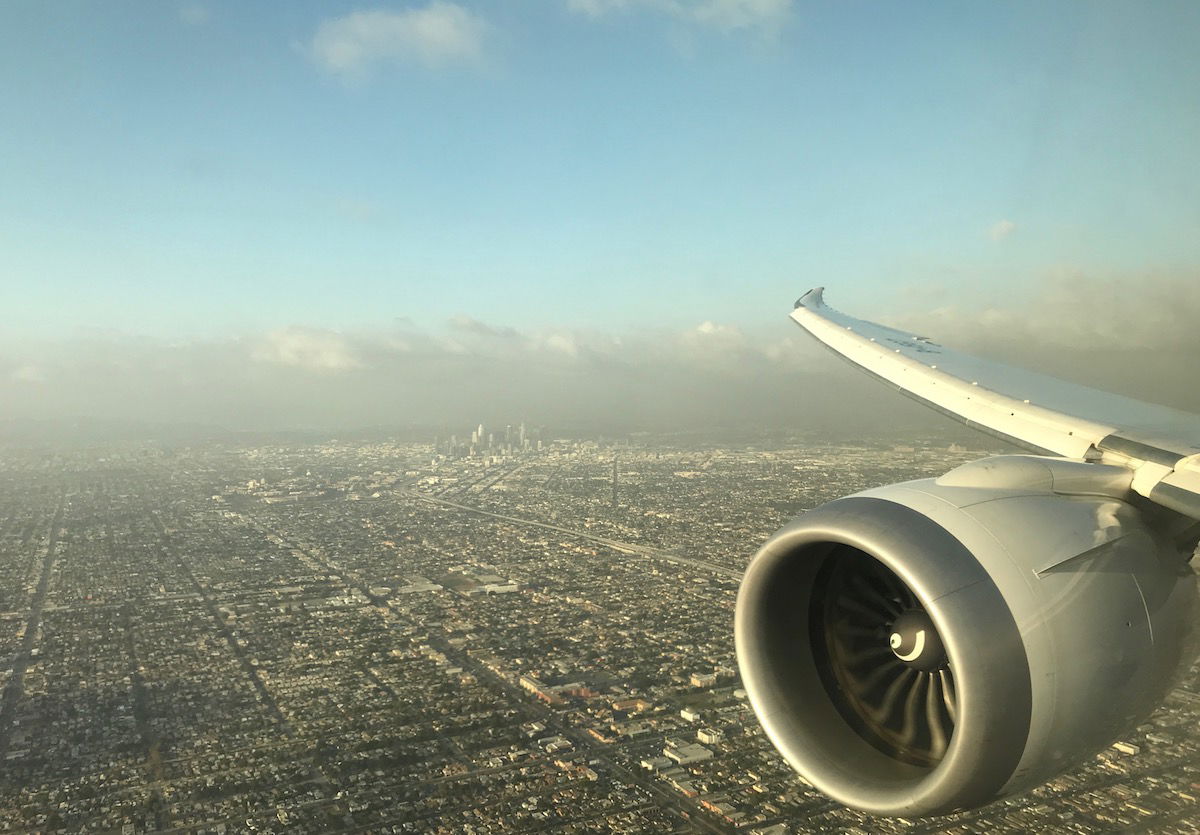
Chinese airlines avoid Russian airspace on new US flights
Airlines in the United States are prohibited from using Russian airspace. This policy applies to all flights operated by US airlines, as well as flights that are operated as part of a codeshare agreement with a US airline.
Foreign airlines flying to and from the United States aren’t restricted in the same way, unless they want to codeshare with a US airline. As a result, up until now, Chinese airlines have used Russian airspace to and from the United States without any restrictions.
A few months back we heard that the Biden Administration was considering preventing foreign airlines flying to the United States from using Russian airspace, since this presented an unfair disadvantage to US airlines. While that hasn’t been rolled out on a widespread basis, it does look like we’re seeing the first signs of that.
Specifically, Chinese airlines have started avoiding Russian airspace for their four new weekly flights to the United States. They’re continuing to use Russian airspace for the eight weekly flights they previously had permission to operate. While neither US nor Chinese officials have confirmed this restriction, I imagine this must be part of the agreement, or something.
The four new weekly frequencies operated by Chinese airlines are as follows:
- Air China from Beijing to New York
- China Eastern from Shanghai to Los Angeles
- Xiamen Airlines from Xiamen to Los Angeles
- China Southern from Guangzhou to Los Angeles
Just to give some examples, China Eastern’s existing flight from Shanghai to New York continues to use Russian airspace…
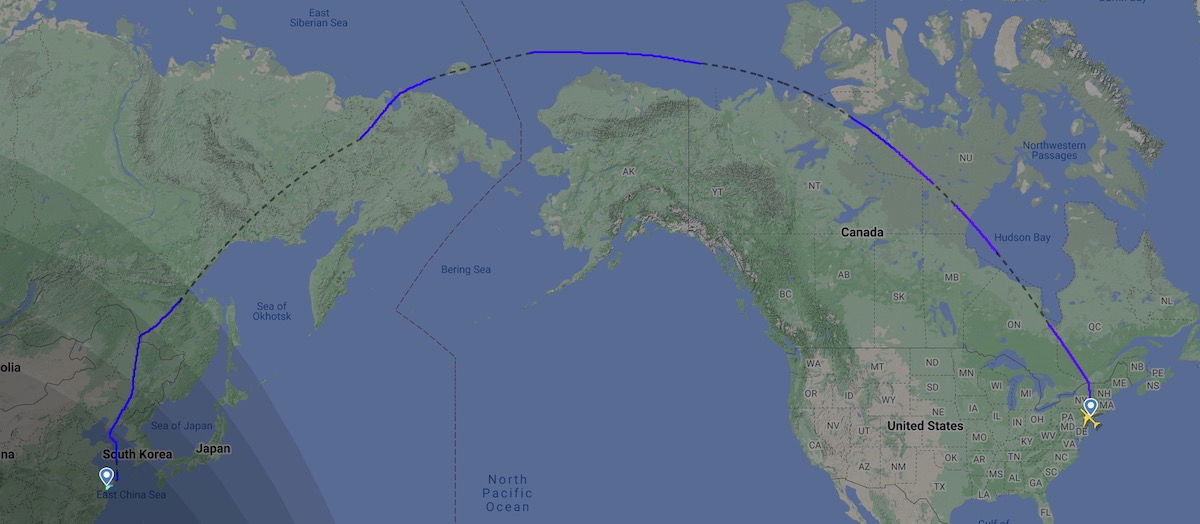
Meanwhile Air China’s new flight from Beijing to New York avoids Russian airspace…
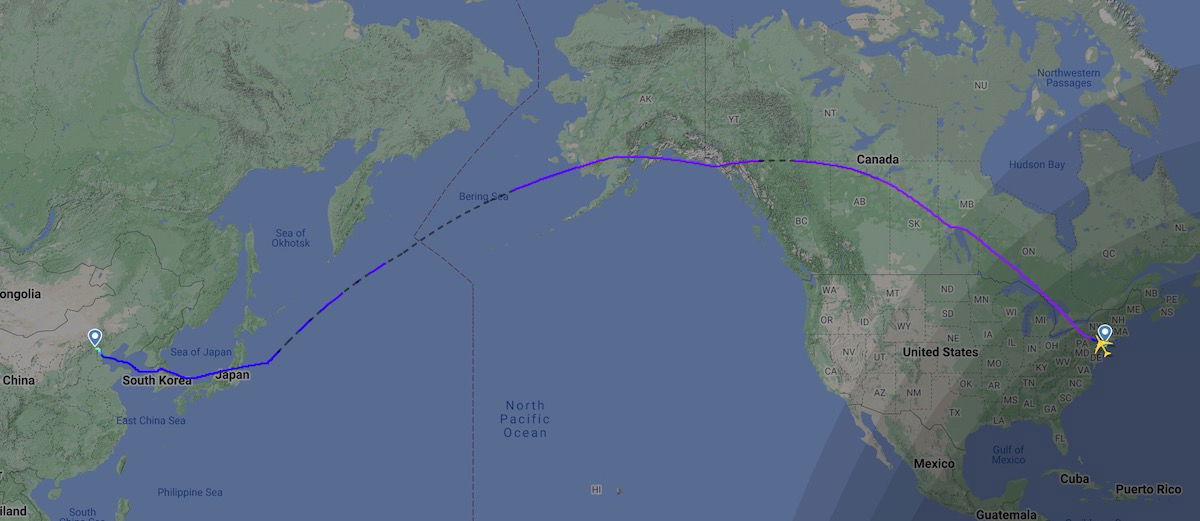
It gets even more interesting for routes that have both new and old frequencies. China Southern now flies twice weekly between Guangzhou and Los Angeles, with one flight being from the new allocation, and one flight being from the old allocation. The old flight uses Russian airspace…
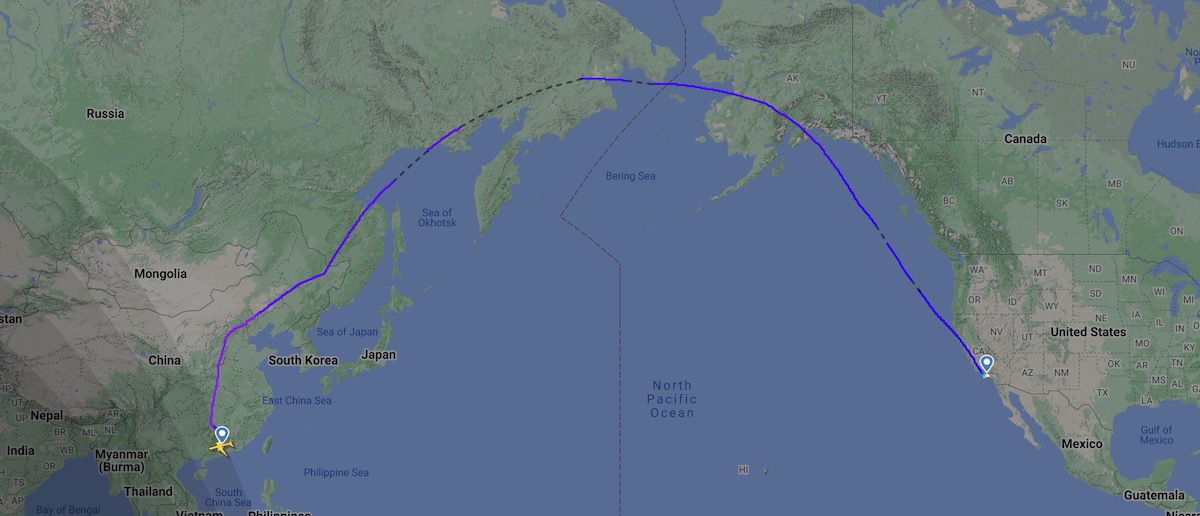
While the new flight doesn’t use Russian airspace…
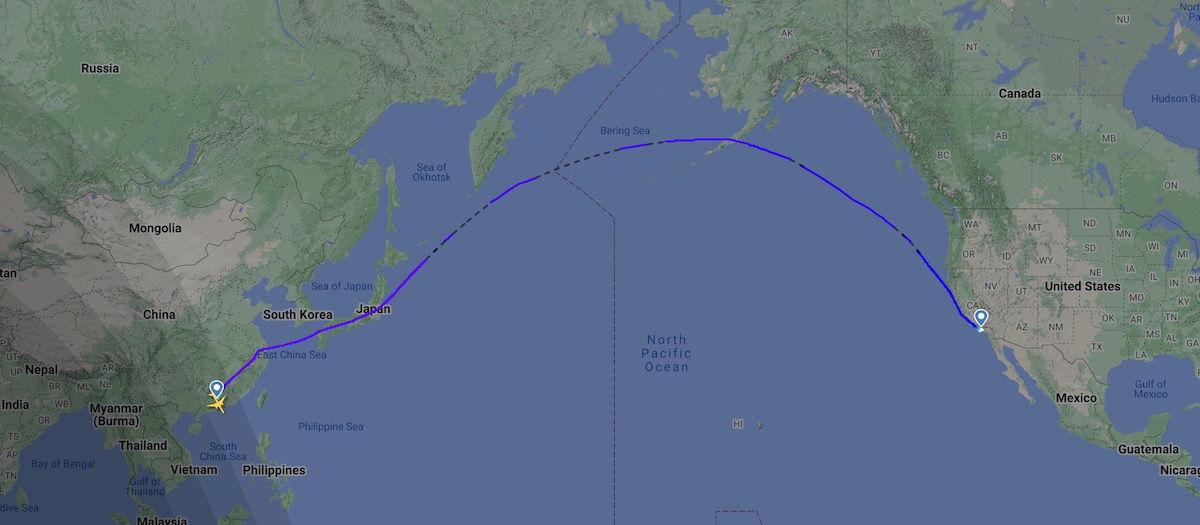
Bottom line
Chinese airlines are still severely capacity constrained in the United States. They’ve just been allowed to increase their weekly flights by 50%, from eight flights to 12 flights. Interestingly these four additional weekly frequencies seem to come with a restriction that requires them to avoid Russian airspace.
We knew the Biden Administration had considered imposing these airspace restrictions on foreign airlines, but this seems to be the first example of that.
What do you make of these new routings for Chinese airlines?





I think it is not fair that china airlines takes advantage by flying to Europe over russia. european airlines don't have an alternative. So my solution is to raise taxes for chinese companies.
Hi Ben, is there any news on this? will we see more flights from US carriers to China in the near future?
Where are the environmentalists now?? Lots of clean energy research, now this allowed??
I think demand in particular from the Chinese side is much less than prepandemic and pre-trade war. Ten years ago, both work and leisure travel to the US/Europe was positively perceived, now it's seen critically. Even if formal restrictions have been lifted, you would need a good reason to travel there, due to social control.
Tit for tat and the customer is always affected in such a situation.
Random Q: how does this affect Hong Kong? Will we be seeing more US or Chinese flights between HK and the US?
HKG has a separate air services treaty with the US than China.
Still, UA is the only US airline serving HKG and I think they only do one flight/day - far below pre-covid levels.
And China is clearly monitoring demand on their and US carrier flights to the US and will allow more frequencies when it is justifiable but fares between the US and China were very low - part of why AA pulled...
HKG has a separate air services treaty with the US than China.
Still, UA is the only US airline serving HKG and I think they only do one flight/day - far below pre-covid levels.
And China is clearly monitoring demand on their and US carrier flights to the US and will allow more frequencies when it is justifiable but fares between the US and China were very low - part of why AA pulled so much of its capacity and gave back its LAX to China routes to the DOT.
China subsidized its carriers so that its citizens could travel the world and they aren't willing to do that any more. Add in the geopolitical tensions - which are more between the US and China that any two countries - and the level of demand and the routes that existed pre-covid just won't return.
HKG is another shade of gray in terms of demand but some of the same political overtones still will reduce demand.
Airlines around the world are reallocating airplanes from the HKG/China market to other markets - esp. to Europe for US airlines.
You'd think this would be a huge opportunity for CX (apparently their U.S. flights are running at near 100% yields) to capitalize on these capacity constraints and yet they can't seem to stop shooting themselves in the foot
KE,OZ,JL and NH are the current major player in the CN-US flight markets
Currently United operates SFO-HKG daily and will go to 2x daily later in the summer.
It's just a small start, but I look forward to more Chinese airline capacity being added to push down the West Coast - Asia fares like we had before COVID.
Probably won't be seeing anything like that again.
Provincial governments and even cities were subsidizing carriers to operate nonstops to the USA to promote their own growth and business ties, and the airlines bit because many of those flights could legally be operated as direct through-flights from Beijing's Capital airport, while using regional flight authorities: thus giving them more access to Capital, and allowing same-ticket same-flight number (and in some cases even same-aircraft) operations from...
Probably won't be seeing anything like that again.
Provincial governments and even cities were subsidizing carriers to operate nonstops to the USA to promote their own growth and business ties, and the airlines bit because many of those flights could legally be operated as direct through-flights from Beijing's Capital airport, while using regional flight authorities: thus giving them more access to Capital, and allowing same-ticket same-flight number (and in some cases even same-aircraft) operations from Capital to the USA, when Air China would otherwise have a monopoly on nonstops.
Now, with the opening of Beijing's Daxing airport, in addition to Capital remaining open, there's far less incentive for airlines to be a part of the regional scheme.
So even if/when the USA and PRC finally permit the same amount of frequencies previously allotted before Covid, you likely won't see airlines taking subsidies to operate sub-$500 fares from LAX/SFO/JFK to places like Changsha, Jinan, Wuhan, Kunming, Qingdao, Fuzhou, etc as before.
Mayyyybe the likes of Chengdu, Xiamen, and Chongching return.... but if so, it won't be at the price-point they used to, that's for sure.
Chongqing*
Those low fares to Asia were great!
I think China is starting to see the hand writing on the wall and is going to back away from Russia behind the scenes.
I think the writing on the wall applies more to Ukraine. If they haven't made any significant gains by the end of summer (and I seriously doubt they will), I can see them being forced to the negotiating table as US and European arsenals and appetities for war become more depleted. I don't think Ukraine's backers ever seriously thought they could defeat Russia (let's be honest, at best for Ukraine, it'll remain a stalemate -...
I think the writing on the wall applies more to Ukraine. If they haven't made any significant gains by the end of summer (and I seriously doubt they will), I can see them being forced to the negotiating table as US and European arsenals and appetities for war become more depleted. I don't think Ukraine's backers ever seriously thought they could defeat Russia (let's be honest, at best for Ukraine, it'll remain a stalemate - a Korea-style standoff), and the sanctions aren't hurting Russia anywhere near as bad as anticipated. Moreover, I think Zelensky and others in Kiev are very close to over-stepping in their unrealistic demands and rude criticism of their backers, and I honestly think Washington and Brussels are tiring of them behind the scenes.
Meanwhile there’s a vastly higher number of flights between Europe and China, with major carriers operating at least daily flights to Beijing and Shanghai.
just to be clear, US airlines are only allowed 12 flights/week spread between the 3 US airlines which serve China - so 4 flights/week each for AA, DL and UA.
Why China is asking its airlines to abide by Russian overflight restrictions just for the new flights is a little strange but no US airline serves LAX to China so the extra time doesn't really matter. The new policy might just be a very...
just to be clear, US airlines are only allowed 12 flights/week spread between the 3 US airlines which serve China - so 4 flights/week each for AA, DL and UA.
Why China is asking its airlines to abide by Russian overflight restrictions just for the new flights is a little strange but no US airline serves LAX to China so the extra time doesn't really matter. The new policy might just be a very small olive branch between the US and China.
US airlines esp. UA have been especially critical of foreign airlines that use Russian airspace; Air India is able to fly routes that United cannot such as to Chicago and SFO to India.
Interestingly, no matter how much the US carriers complain, that particular status quo is unlikely to change either. The US is stuck for now having to pander to India's interests to avoid pushing them away, and India as an ally is far more critical for US interests in a world where Russia and China are significantly less than allies.
that is correct and it also explains why historically strong airlines like UA to India now partner with a Middle East airline in order to not lose quite as much share.. never mind that the LH Group flies multiple flights/day from India to their hubs, all of which have abundant Star service ot the US.